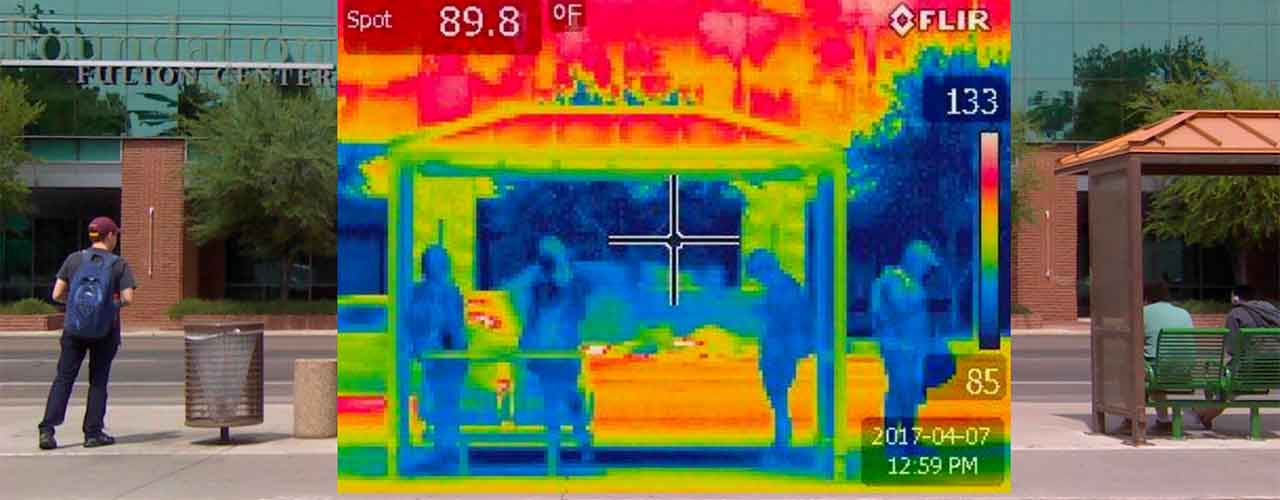Bus and Rail Network Design and Exposure to Extreme Heat
We have developed a framework for assessing exposure to environmental conditions (e.g., extreme heat, precipitation, or cold) based on network analyses of parcels, transit networks, and transit schedules. We simulate for every residential parcel in a city how long they are exposed based on their walking times to and from transit and their waiting times at transit. Our results show that, in the case of Southwest U.S. cities, that when temperature is highest (midday), exposure is greatest due to lower headways at offpeak times. We overlay social vulnerability indices to show which neighborhoods are at greatest risk. With this information we are able to direct transit agencies towards strategic investments in schedule changes, public outreach, and communication of transit schedules to reduce these vulnerabilities.




